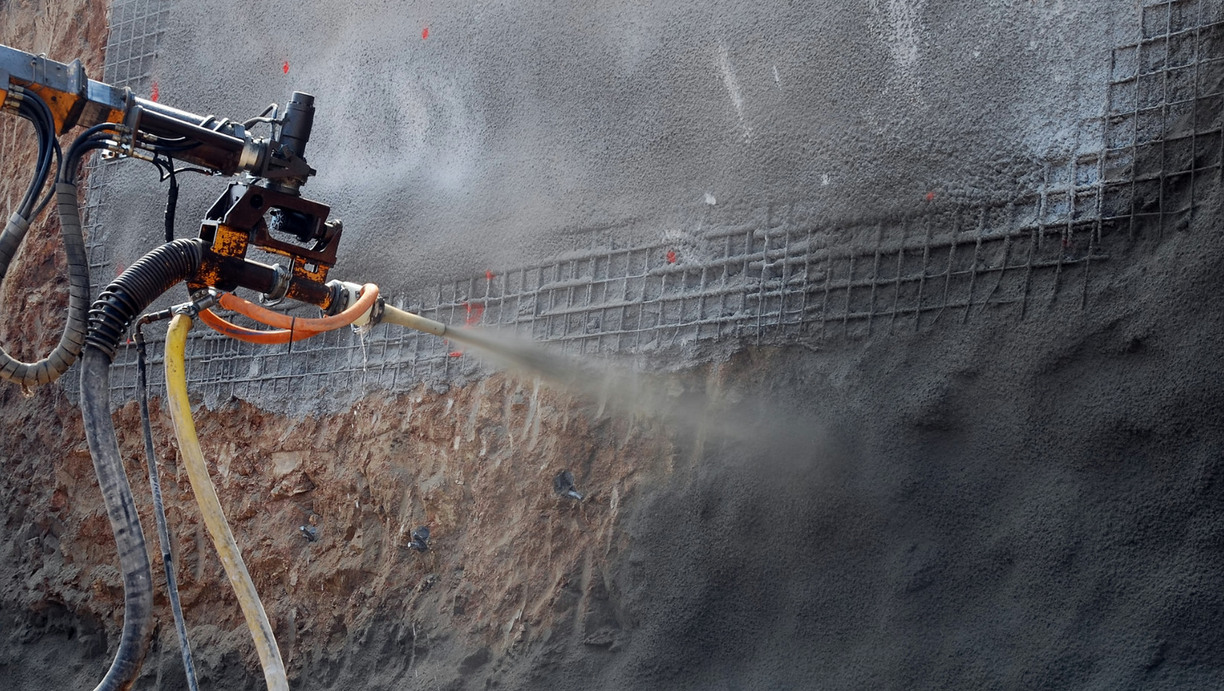
Shotcrete
The shotcrete was invented over 100 years ago and it is commonly used to repair concrete structures and for securing a rock mass in tunnels and mines. Material requirements are significantly tougher in comparison with cast insitu or precast concrete. Shotcrete is exposed to severe conditions from the very moment when it is placed on the rock surface with a high impact speed, rebound, a limited possibility for effective curing, required fast strength development, low shrinkage, etc.
The shotcrete used in Sweden is based on Portland cement, which despite a number of advantages is also known for its very high CO2 footprint, (700-900 kg of CO2 / ton of the produced cement). This in combination with a typically high binder content >450 kg/m3 results in a generally negative environmental impact. Furthermore, the high amount of cement combined with chemical accelerators result in a high shrinkage leading to cracking and eventually to problems with durability and safety. Regular concretes can contain large amounts of secondary cementitious materials (SCM) to reduce the CO2 footprint. Unfortunately, the maximum SCM amount for shotcrete is reduced in Sweden and in other countries to just 6% due to a slower strength development, durability problems and low robustness.
Contact
Ilda Tole
- Postdoctoral researcher
- 0920-493236
- ilda.tole@ltu.se
- Ilda Tole
Updated:
